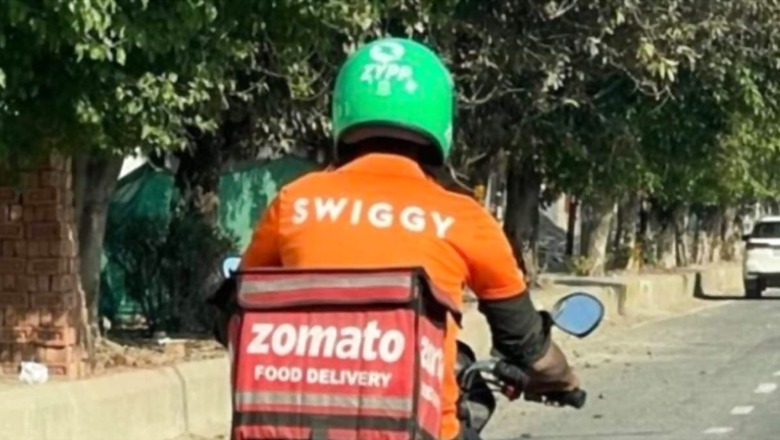
views
Borzo, a global delivery company, conducted a study to delve into the financial literacy of gig delivery workers by understanding their awareness and comprehension of savings tools, taxation and slabs, income, etc.
It highlighted that India’s Income tax data presented in parliament during the fiscal year 2022-23 shows that 7.4 crore individuals filed income tax returns. Of these, approximately 70% (5.16 crore) of individuals reported zero tax incidence.
This means that approximately only 1.6 % of the total population paid income tax during the same period. While there has been a rise in income tax compliance from 2019-20 to 2022-23, the surge in individuals with zero tax incidence has outpaced this growth.
Borzo (formerly WeFast) has released a survey report titled, “Understanding the Financial Literacy of gig delivery partners,” to present in-depth insights into the financial literacy and acumen of gig delivery partners.
According to NITI Aayog, in India, there were seven million gig workers, and this number is expected to rise to 25 million by 2030, with a compound annual growth rate of almost 12%.
The sample size of the survey is over 2000 gig delivery workers across 40 cities in India.
Gig Worker Economy
Gig workers are individuals who engage in flexible work arrangements outside traditional employment. This includes platform-based workers like ride-hailing drivers and food delivery agents, as well as freelancers such as writers, designers, and developers.
Other gig workers encompass home tutors, event staff, part-time retail employees, and online sellers characterised by project-based work, no fixed employer-employee relationship, and variable income, the gig economy is a growing trend in India, offering flexible opportunities but also raising questions about worker rights and social security.
Here are the key insights from the report:
Survey Findings:
- Income Range: A significant majority (77.6%) of gig delivery workers reported annual incomes less than Rs 2,50,000. Approximately 20% of gig delivery workers earn in the range of Rs 2,50,000 to Rs 5,00,000. 2.6% of gig delivery workers reported income in the range of Rs 5,00,000 – Rs 7,50,000. The data is collected from gig delivery workers simultaneously working on various platforms
- Tax Awareness: The majority of Gig Delivery workers, almost 61%, claimed that they are not aware of income tax brackets, while 39% claimed to be aware of income tax brackets.
- Tax Compliance: In fact, 33.5% claimed to have filed income tax returns whereas a substantial 66.5% have never filed ITR.
- ITR Filing: Of those Gig workers who file ITR, 66% file Zero (Nil) Returns and nearly 34% file Self-Assessment Returns.
- Tax Payment: 47% of gig delivery workers that file ITR pay Advanced Tax amounts in regular instalments, while 53% pay One-time Tax.
- Willingness to Pay Tax: Interestingly, a considerable segment (42%) of non-ITR-filing respondents expressed willingness to pay taxes if they fall into a tax bracket, however, 58% are not willing to pay taxes despite falling into the bracket.
- Tax Amount: Nearly, 75% of gig delivery workers mentioned that they have not paid any tax whereas nearly 20% have paid taxes in the range of Rs 12,500 to Rs 25,000. 4.6% of gig delivery workers pay taxes in the range of Rs 50,000 to Rs 75,000.
Investment Habits:
-Mutual Funds: A substantial 77% of gig delivery workers do not invest in Mutual Funds. Only 23% of gig delivery workers invest in mutual funds out of which 71% make a monthly SIP in the range of Rs 500 to Rs 1000.
-10% invest in the range of Rs 1000 to Rs 2000 and nearly 12% invest in the range of Rs 2000 to Rs 3000 in SIP monthly. Only a handful 4% invest in the range of Rs 3000 to Rs 5000 and only 3% have surplus funds to invest above Rs 5000 in Mutual Funds.
-Stock: A staggering 74% of gig delivery workers said that they do not engage in stock market investments. Approximately, only 26% of gig delivery workers invest in stocks. Out of those who invest in stocks, nearly 48% prefer investing in blue-chip stocks. Approximately, 29% invest in IPO and 23% in penny stocks.
- Long-term Savings: Despite the potential for long-term financial stability, only 24% of gig delivery workers save through Public Provident Fund (PPF) accounts, signalling a gap in long-term savings strategies. The majority of those who invest in PPF, invest Rs 1000 to Rs 3000 per month, indicating a manageable contribution.
- Life Insurance: 65% of Gig Delivery workers do not possess a life insurance policy, indicating a lack of financial foresight for families during unexpected events.
The Gig Delivery workers surveyed work and delivered simultaneously for multiple delivery companies. Some of the companies mentioned by them include Porter, Zomato, Swiggy, Uber, Delhivery, Ola, Shadowfax, Rapido, Zepto, Shiprocket, Amazon, Flipkart, Dunzo, Ecom Express, Ekart, Domino’s, Jio Mart, Urban Company, DTDC, Country Delight, inDrive, Licious, XpressBees, etc.
Eugene Panfilov, MD, Borzo India and Regional Director, Borzo Brazil, said, “As we navigate the nuances of this dynamic gig economy, it’s imperative to equip gig delivery workers with the knowledge and tools for effective financial planning.
“The debate surrounding minimum income for gig delivery workers, given the complexities of this sector, further emphasises the need for targeted education and support. Addressing these identified financial literacy gaps is paramount, not only for the well-being of gig workers but also for their financial resilience.”
“The data emphasises the importance of guiding millions of gig delivery workers in India about investment tools like mutual funds, stocks, PPF, and the necessity of safeguarding their families financially.”
“When applying for a loan in India, submitting Income Tax Returns is crucial, as banks and financial institutions routinely require them. The fact that gig workers are aware of this requirement and are increasingly filing zero returns is a positive indicator of their financial responsibility.”
The survey was conducted in cities including Tier I and II cities like Mumbai, Delhi, Bengaluru, Hyderabad, Jaipur, Ahmedabad, Kolkata, Chennai, Pune, Gurgaon, Noida, Lucknow, Indore, Chandigarh, Surat, Udaipur, Amritsar, Vadodara, Thane, Kanpur, Bhopal, Haridwar, Guwahati, Ghaziabad, Faridabad, Kanchipuram, Ludhiana and Tier 3 towns such as Pimpri Chinchwad, Raebareli, Kalyan, Chapra, Palghar, Kashipur, Nashik, Jalandhar, Baghpat, Saharanpur, Mohali, Nadiad, Rohtak.
















Comments
0 comment